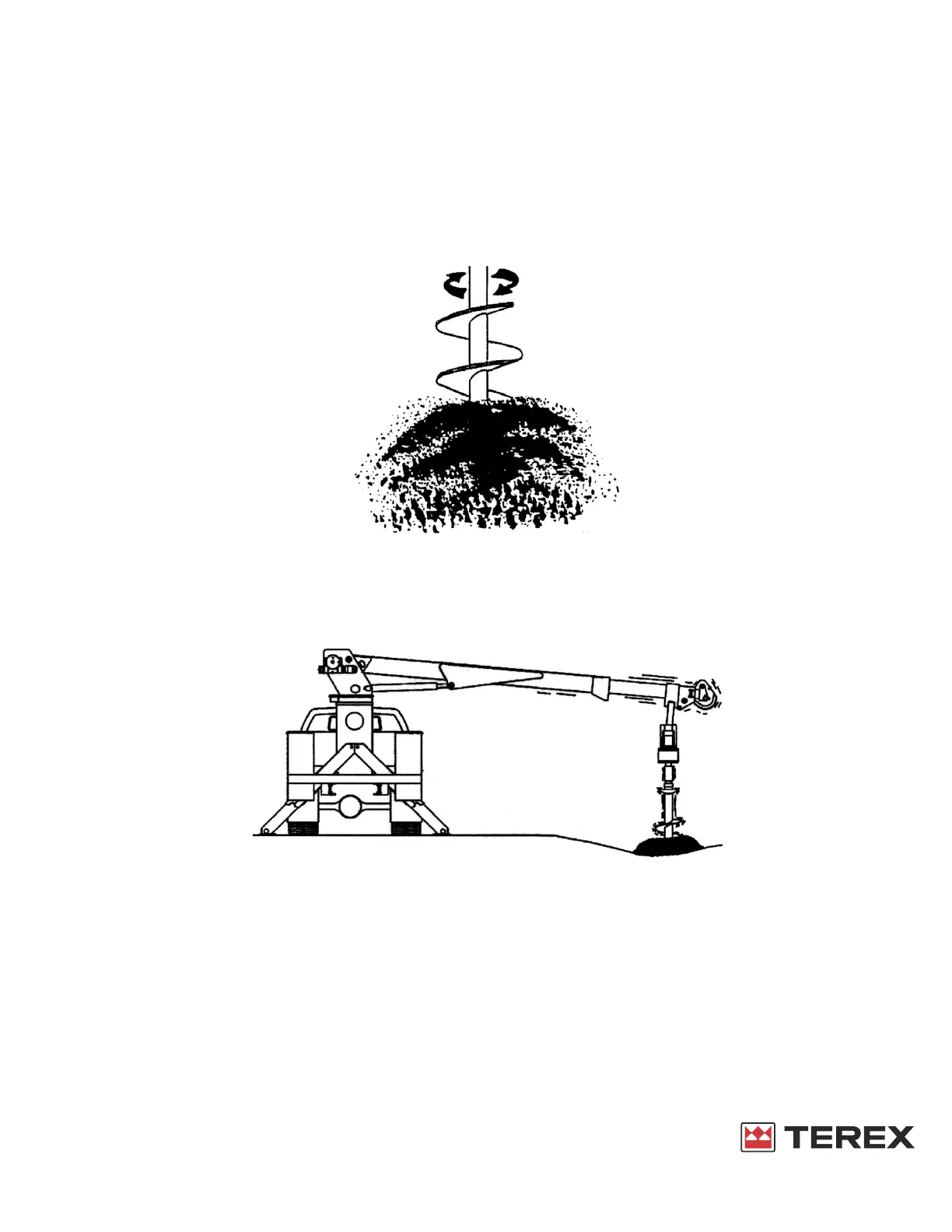DIGGER DERRICK
1-41
Digger Derrick Terex South Dakota, Inc. 463280 - 9/14
OPERATION GUIDELINES
Push the digger control to “DIG” position and lower the auger into the ground by slowly lowering the boom.
Control the rate of lowering the boom to get maximum penetration but do not stall the digger. When using
carbide teeth, always remove down pressure before reversing the auger to avoid damage to the carbide
teeth.
Raise the auger periodically and spin off the soil. Soil can be spun off by rotating the auger. In sticky soil
conditions, loosen soil with a shovel while rotating auger slowly. Do not bury the top flighting of the auger as
soil will compact on top.
SPINNING THE DIRT OFF THE AUGER
Under “heavy” soil conditions, auger tends to corkscrew rather than dig. Regulate the down pressure of the
boom to avoid this. Meter the down speed to keep the dirt “churning” and continue lifting up as the auger
turns. Keep auger vertical by metering the second section extension and boom rotation controls. If operator
has difficulty determining if hole is vertical, have a ground person direct moves. Move in or out to keep hole
vertical.
AVOID DIGGER CORKSCREW
DIGGING IN ROCKY CONDITIONS
Digging in rocky soil requires slow speed to obtain best results and to avoid damage to auger teeth, digger,
and equipment from striking heavy stones.
In rocky soil, carefully lower the auger and avoid excessive down pressure. Most rocks are brought up on
the auger flighting or pushed out of the way by the auger head.
Judgment dictates whether or not rocks raised to the surface should be pushed aside by the ground
personnel while auger is stopped in hole to prevent falling back. Letting the auger kick out the rocks may
result in rock returning to hole. If the auger strikes rocks and stalls, it may be possible to lift the rock out with
the boom, keeping the digger “IN GEAR”. If that does not work, decrease down pressure and reverse the
digger for a 1/2 revolution before proceeding.
